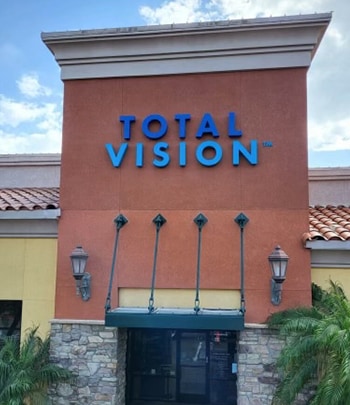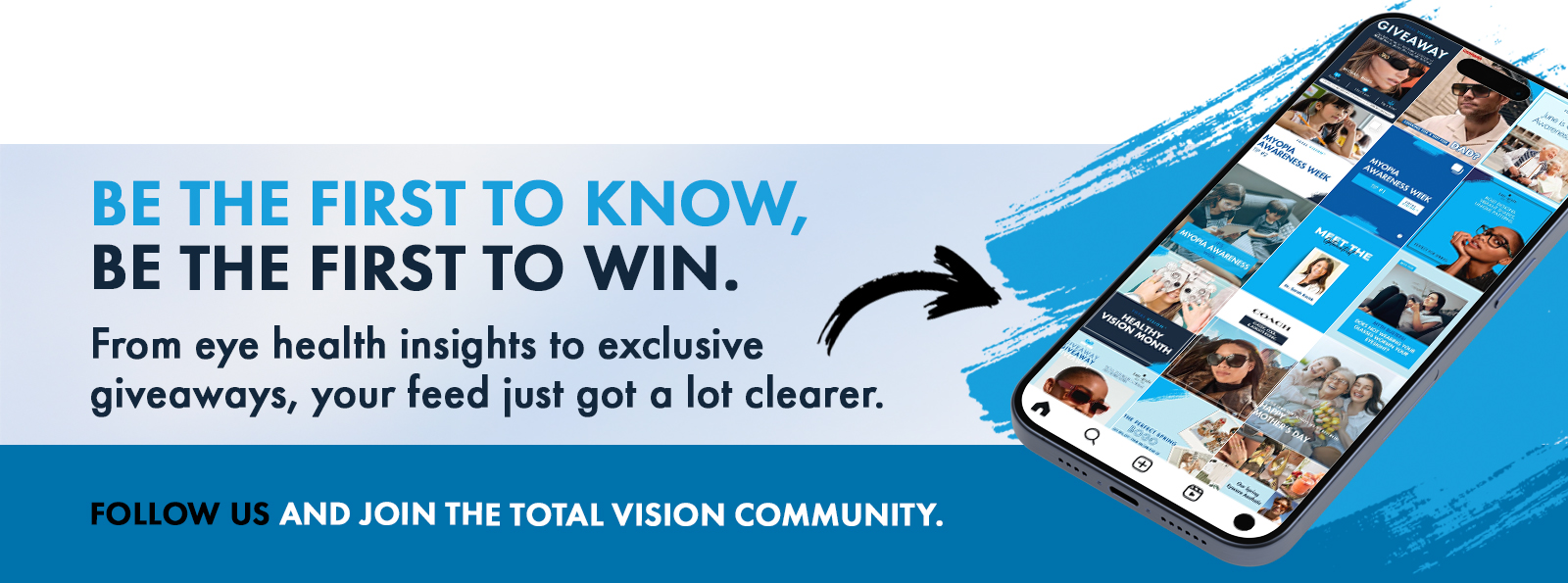Caring Support for Growing Eyes
There’s no understating how important your child’s eyes are. Even before your baby reaches out with their hands, they explore and learn about their world through their eyes. Your child’s vision is intricately tied to their development, but eye problems could lead to developmental delays.
At Total Vision Solana Beach, we’re as invested in your child’s eyes as you are. We use non-invasive diagnostic technology and tried-and-true techniques to get a full picture of your child’s eye health, as well as their visual acuity, eye movements, and visual skills.
Our friendly optometric team knows how to make the eye exam experience fun and interesting for your child so they can learn to love and care for their eyes throughout their life! Call us today to book a children’s eye exam in Solana Beach and help your child experience all the wonders the world has to offer.
Common Childhood Eye Conditions
Every children’s eye exam at Total Vision Solana Beach includes testing for refractive errors like nearsightedness, and vision problems that need treatment, like strabismus, and amblyopia.
Myopia (Nearsightedness)
Myopia, more commonly known as nearsightedness, is a refractive error that makes distant objects appear blurry. It commonly develops during childhood and occurs when the eye grows too long, or the cornea becomes too steep.
Myopia can be diagnosed during an eye exam and is generally corrected with glasses or contact lenses. However, myopia that develops in early childhood can progress to high myopia, which increases the risk of acquiring a vision-threatening condition.
Because of these risks, there has been much research and success with various methods of myopia control. To learn more about myopia control and how we can help at Total Vision Solana Beach, please check out our Myopia Control page!
Amblyopia (Lazy Eye)
Amblyopia, commonly known as “lazy eye,” is characterized by an eye that wanders, turning in or out. Amblyopia is caused by reduced vision in the wandering eye and is often associated with crossed eyes or a large difference in the degree of visual acuity between the 2 eyes.
Children won’t outgrow this condition, and a child with amblyopia will become an adult with amblyopia without treatment. Children who grow up with untreated amblyopia may experience lifelong vision problems.
Treatment often includes retraining the brain to encourage it to use the weaker eye through vision therapy, eye patches, corrective lenses, or prisms.
Strabismus (Crossed Eyes)
Commonly known as “crossed eyes,” strabismus is a vision condition that occurs when the eyes are misaligned. It can be caused by issues with the eye muscles, the nerves that control the eye muscles, or the signals between the brain and the eyes.
When the eyes are misaligned, they send 2 different images to the brain, causing it to become confused. At first, these images may lead to double vision and poor depth perception, but eventually, the brain will start to ignore signals from the weaker eye, leading to amblyopia and vision loss in that eye.
Like amblyopia, children can’t grow out of strabismus. Without treatment, strabismus can get worse and cause vision problems later in life. It’s easily diagnosed during a comprehensive eye exam and can be treated with corrective lenses, prisms, vision therapy, and, in severe cases, eye muscle surgery.
Conjunctivitis (Pink Eye)
Conjunctivitis, or “pink eye,” occurs when the conjunctiva (the transparent membrane covering the eyes and inner eyelids) becomes inflamed and red. It’s a common infection easily spread among children in school or daycare.
There are several causes of conjunctivitis, but it’s most commonly caused by highly contagious bacterial or viral infections or allergies. Treatment varies depending on the cause, so it’s important to take your child to an optometrist if they’re showing signs of pink eye.
Please call us immediately if your child has:
- Red eye(s)
- Itchiness in one or both eyes
- A gritty feeling in one or both eyes
- Discharge from one or both eyes
- Excessive tearing


When Does My Child Need an Eye Exam?
Children’s eyes continually grow and develop. The American Optometric Association (AOA) recommends that children’s eyes are examined around their visual milestones and at the ages when vision problems are most likely to occur.
But every child is different and has different visual needs. Your child’s optometrist may recommend an eye care schedule personalized to them that may look different than what we highlight here:
Toddlers:
Your baby should have their first eye exam around 12 months. Your optometrist will check your child’s visual skills, which begin developing in their first 6 months, and check for vision and eye health problems.
Preschool Children:
Your preschool child should have at least one eye exam before starting school, between 3 and 5 years. Common issues like amblyopia and strabismus may develop around this time and could require treatment to avoid impacting your child’s vision.
School-Aged Children:
Children should have an eye exam every year while they’re in school to catch and correct vision problems that could affect their school performance or extracurricular activities.
Schedule a Children’s Eye Exam Today
Our main goal is to help your child develop healthy habits that keep their eyes strong and happy! Our eye care team is wonderful with kids and does their best to make every child feel at home. Call us today and book your child’s eye appointment at Total Vision in beautiful Solana Beach!
Visit Us Today

You can find us off Interstate 5 in Solana Beach Towne Centre. There’s plenty of parking including tons of accessibility stalls.
- 665 San Rodolfo Drive, Suite 119
- Solana Beach, CA 92075
Hours of Operation
- Monday: 9:00 AM – 2:00 PM
- Tuesday: 9:00 AM – 5:00 PM
- Wednesday: 9:00 AM – 5:00 PM
- Thursday: 9:00 AM – 5:00 PM
- Friday: 7:00 AM – 12:00 PM
- Saturday: Closed
- Sunday: Closed


Our Brands












